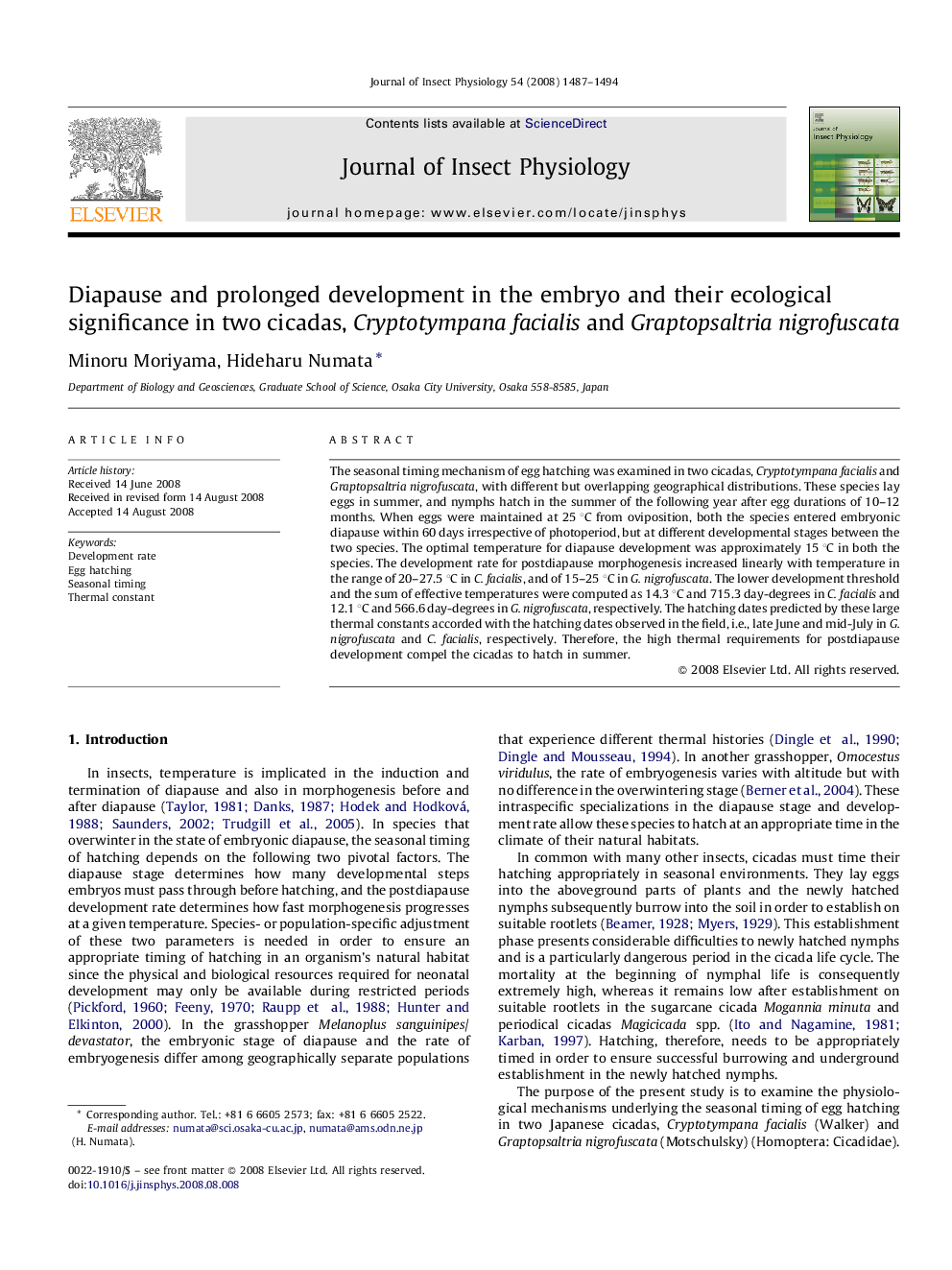| Article ID | Journal | Published Year | Pages | File Type |
|---|---|---|---|---|
| 2841230 | Journal of Insect Physiology | 2008 | 8 Pages |
The seasonal timing mechanism of egg hatching was examined in two cicadas, Cryptotympana facialis and Graptopsaltria nigrofuscata, with different but overlapping geographical distributions. These species lay eggs in summer, and nymphs hatch in the summer of the following year after egg durations of 10–12 months. When eggs were maintained at 25 °C from oviposition, both the species entered embryonic diapause within 60 days irrespective of photoperiod, but at different developmental stages between the two species. The optimal temperature for diapause development was approximately 15 °C in both the species. The development rate for postdiapause morphogenesis increased linearly with temperature in the range of 20–27.5 °C in C. facialis, and of 15–25 °C in G. nigrofuscata. The lower development threshold and the sum of effective temperatures were computed as 14.3 °C and 715.3 day-degrees in C. facialis and 12.1 °C and 566.6 day-degrees in G. nigrofuscata, respectively. The hatching dates predicted by these large thermal constants accorded with the hatching dates observed in the field, i.e., late June and mid-July in G. nigrofuscata and C. facialis, respectively. Therefore, the high thermal requirements for postdiapause development compel the cicadas to hatch in summer.
